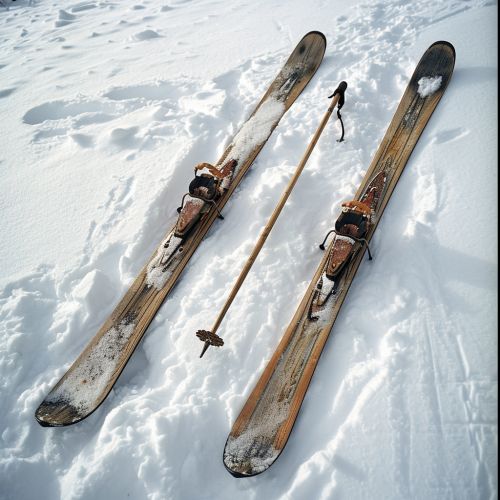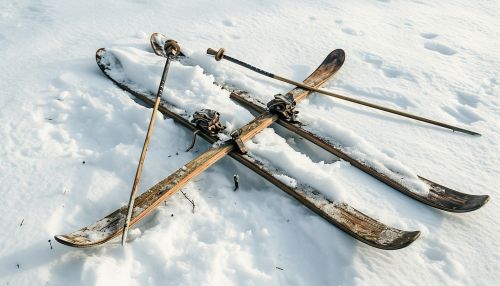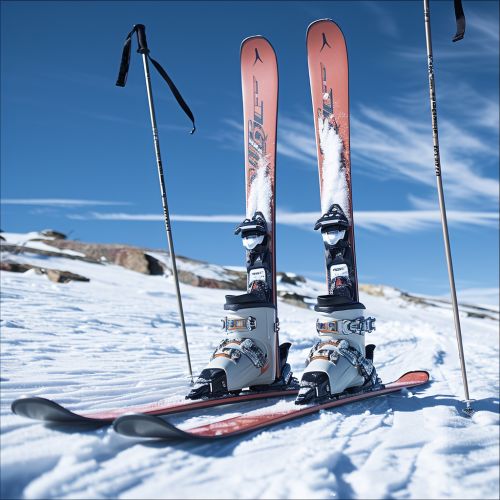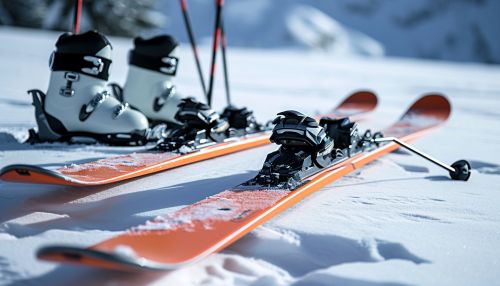Skiing
History of Skiing
Skiing, as a mode of transport and recreational activity, has a history that dates back thousands of years. The earliest archaeological evidence of skiing was found in Russia and dates back to 6000 BCE, showing that the activity was used for hunting and transportation in the snowy regions of the world read more.


As civilizations evolved, so did the practice of skiing. The Norse mythology, from Scandinavia, contains numerous tales about the god Ullr who was revered as the ski-god read more. In the Middle Ages, armies used skiing for military purposes, a practice that continued into the 20th century with ski warfare read more.
Types of Skiing
Skiing can be broadly divided into two main types: Alpine and Nordic.
Alpine Skiing
Alpine skiing, also known as downhill skiing, involves sliding down snow-covered slopes on skis with fixed-heel bindings read more. It is typically practiced at ski resorts which provide services such as ski lifts, artificial snow making, snow grooming, restaurants and ski patrol.
Nordic Skiing
Nordic skiing encompasses a variety of formats that use free-heel bindings, including Cross-country skiing, Ski jumping, and Biathlon read more.
Ski Equipment
The basic equipment needed for skiing includes skis, ski boots, ski poles, and ski bindings.
Skis
Skis are the main piece of equipment and have evolved significantly from the wooden planks used in ancient times. Modern skis are made from a complex assembly of components including a base, edges, core, and various layers of different materials read more.


Ski Boots
Ski boots are specially designed footwear that fit into the ski bindings to securely attach the skier to the skis. The design of ski boots varies greatly between the types of skiing, with alpine boots being rigid and robust, while Nordic ski boots are more flexible and lighter read more.
Ski Poles
Ski poles are used for balance, timing and propulsion. Modern ski poles are made from aluminum, carbon fiber, or a composite material read more.
Ski Bindings
Ski bindings are a critical safety feature that connects the ski boot to the ski. The bindings release the boot in case of a fall, reducing the risk of injury read more.
Skiing Techniques and Styles
There are various techniques and styles in skiing, each requiring different skills and equipment.
Carving
Carving is a skiing technique where the skier leans into the turn, causing the ski to bend and carve a path in the snow read more.
Mogul Skiing
Mogul skiing involves skiing on a slope covered in moguls, which are mounds of snow created by the repeated turns of skiers read more.
Freestyle Skiing
Freestyle skiing is a form of skiing which originally encompassed two disciplines: aerials and moguls, but now also includes halfpipe, slopestyle, big air, and skicross read more.
Safety and Risks
Skiing, like all sports, carries with it a certain level of risk. The most common injuries in skiing occur to the lower limb, particularly the knee. Head injuries, which are often the most serious, are less common read more.
Ski Culture
Skiing has developed its own culture and community, with traditions, etiquette, jargon, and even fashion. This culture can vary greatly between different skiing disciplines and regions read more.
